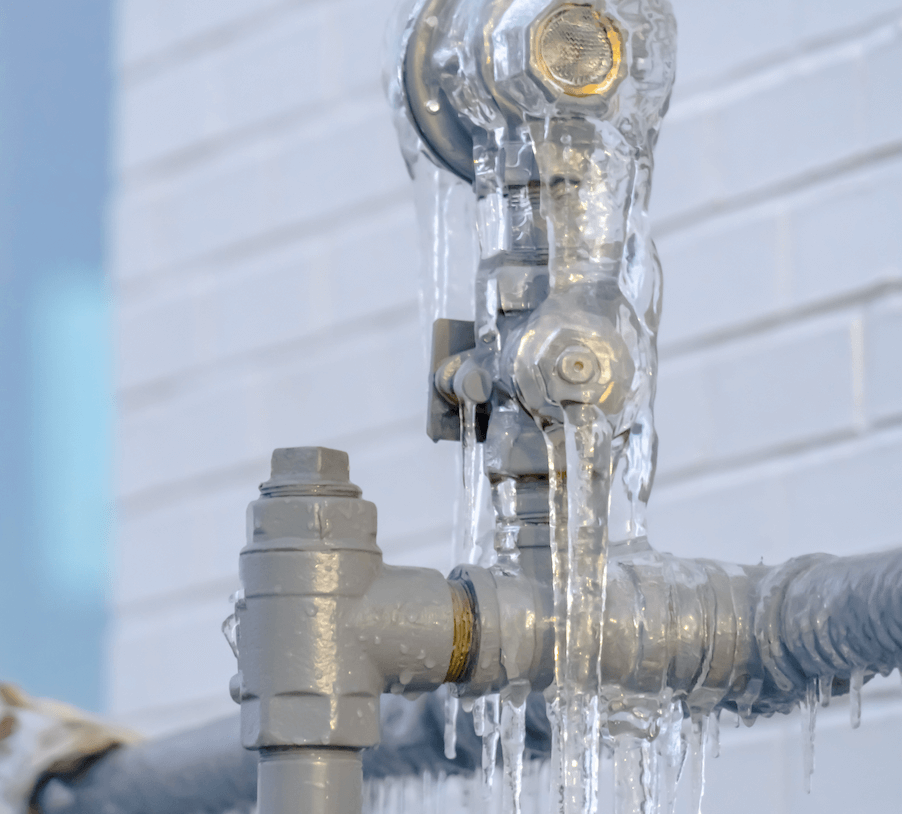What're your opinions concerning How to Prevent Your Pipes From Freezing?

Cold weather can ruin your plumbing, particularly by freezing pipes. Right here's how to prevent it from happening and what to do if it does.
Intro
As temperatures decrease, the risk of frozen pipes increases, potentially causing costly repairs and water damage. Comprehending how to stop icy pipelines is important for house owners in cold climates.
Prevention Tips
Insulating susceptible pipes
Cover pipes in insulation sleeves or make use of heat tape to protect them from freezing temperatures. Focus on pipes in unheated or external locations of the home.
Home heating techniques
Maintain interior rooms appropriately heated up, particularly locations with pipes. Open cabinet doors to permit warm air to distribute around pipelines under sinks.
Exactly how to identify frozen pipes
Search for decreased water circulation from taps, unusual odors or sounds from pipes, and visible frost on subjected pipes.
Long-Term Solutions
Structural modifications
Take into consideration rerouting pipes far from outside walls or unheated locations. Include additional insulation to attic rooms, basements, and crawl spaces.
Updating insulation
Invest in high-quality insulation for pipes, attic rooms, and walls. Proper insulation assists maintain regular temperature levels and minimizes the threat of icy pipes.
Protecting Exterior Plumbing
Garden hoses and exterior taps
Disconnect and drain pipes garden hose pipes before winter months. Set up frost-proof spigots or cover outdoor faucets with shielded caps.
Understanding Icy Pipelines
What triggers pipes to ice up?
Pipelines freeze when subjected to temperatures listed below 32 ° F (0 ° C) for expanded durations. As water inside the pipes ices up, it broadens, taxing the pipe walls and potentially causing them to rupture.
Dangers and damages
Frozen pipes can cause water system disruptions, residential property damage, and pricey repair work. Burst pipelines can flooding homes and cause extensive architectural damage.
Signs of Frozen Water Lines
Recognizing frozen pipes early can avoid them from breaking.
What to Do If Your Pipes Freeze
Immediate activities to take
If you presume frozen pipes, maintain faucets open up to relieve pressure as the ice thaws. Make use of a hairdryer or towels soaked in hot water to thaw pipes gradually.
Verdict
Protecting against icy pipelines needs positive actions and fast reactions. By recognizing the causes, indicators, and preventive measures, homeowners can safeguard their plumbing throughout winter.
6 Proven Ways to Prevent Frozen Pipes and Protect Your Home
Disconnect and Drain Garden Hoses
Before winter arrives, start by disconnecting your garden hoses and draining any remaining water. Close the shut-off valves that supply outdoor hose bibs and leave the outdoor faucet open to allow any residual water to drain. For extra protection, consider using faucet covers throughout the colder months. It’s also important to drain water from any sprinkler supply lines following the manufacturer’s directions.
Insulate Exposed Pipes
Insulating your pipes is an effective way to prevent freezing. Pipe insulation is readily available at home improvement stores and is relatively inexpensive. Pay close attention to pipes in unheated areas such as the attic, basement, crawl spaces, or garage. Apply foam insulation generously to create a buffer against the cold. You can also wrap your pipes in heat tape or thermostat-controlled heat cables for added warmth.
Seal Air Leaks
Inspect your home for any cracks or openings that could let in cold air. Seal any holes around the piping in interior or exterior walls, as well as the sill plates where your home rests on its foundation. Additionally, make sure to keep your garage door closed unless you’re entering or exiting. Leaving it open creates a significant air leak that can lead to frozen pipes.
Allow Warm Air Circulation
During cold snaps, it’s essential to allow warm air to circulate evenly throughout your home. Leave interior doors ajar to promote better airflow. Open kitchen and bathroom cabinets to help distribute heat consistently around the rooms. If you have small children or pets, be sure to remove any household chemicals or potentially harmful cleaners from open cabinets for safety.
Let Faucets Drip
A small trickle of water can make a big difference in preventing ice formation inside your pipes. When temperatures drop significantly, start a drip of water from all faucets served by exposed pipes. This continuous flow helps prevent the water from freezing. Additionally, running a few faucets slightly can relieve pressure inside the pipes, reducing the chances of a rupture if the water inside does freeze.
https://choateshvac.com/6-proven-ways-to-prevent-frozen-pipes-and-protect-your-home/

As a keen reader about How To Avoid Freezing Pipes, I figured sharing that excerpt was appropriate. Are you aware of anybody else who is very much interested in the subject? Do not hesitate to promote it. I thank you for your readership.
Call Today